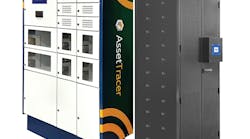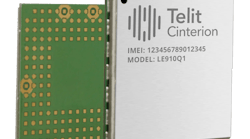After the shocking airborne assaults of Sept. 11, 2001, some security analysts believe the next terrorist attacks might come by sea. Specifically, they see gaps in many security screens large enough to float a shipping container through.
This nightmare scenario envisages some kind of "dirty bomb" made using radioactive or perhaps biohazardous material and shipped into the heart of a major port city like Los Angeles inside a container.
But now, a small Santa Barbara company believes it has developed the technology to allay such worldwide security concerns by embedding interconnected wireless sensors and tracking systems in pallets and containers.
The devices, which form little wireless networks and "talk" to one another, also relay information to collection points. The data can then be downloaded to monitoring stations anywhere in the world.
MachineTalker, employing seven people and based in humble offices on lower De la Vina Street, is eyeing a worldwide fleet of about 80 million containers and planning to take a bite out of the multibillion-dollar homeland security budget.
The company likens the market for security systems and products to a tidal wave and says MachineTalker intends "to ride the monstrous security wave to success" by providing "intelligent" security networks.
President and Chief Executive Officer Roland Bryan says the company, after spending around $2.5 million to date, is close to completing East Coast field trials and refining the latest generation of its device, the ToughTalker.
Mr. Bryan predicts volume production by the first quarter of next year. But before then the technology industry veteran, whose earlier venture, Advanced Computer Communications, was bought by Ericsson in 1998 for $265 million, plans to take MachineTalker public.
Mr. Bryan, among those honored in 1994 as one of the founders of the Internet, according to the company Web site, says the technology being adapted by MachineTalker began life as a commercial application and has wide potential beyond military and security uses.
He started MachineTalker three years ago with Chris Kleveland. However, Mr. Bryan began looking at the concept of "smart" pallets and shipping containers much earlier, around 1997, mainly as a safety response to accidental spillage of unidentified materials.
The "smart" containers he envisaged would have microprocessors detailing the manifest -- information such as the nature of the cargo, its origin and destination, departure and arrival dates -- and global positioning system tracking.
Eight years later, the customer is different -- right now it's Halliburton subsidiary Kellogg, Brown & Root, which Mr. Bryan says is responsible for around 600,000 military shipping containers -- but the technology is similar.
"When fully deployed, MachineTalker technology will monitor critical sensor, position and content data for the contractor's fleet of containers distributed worldwide," the company says.
MachineTalker is putting together the microtechnology for "smart" attachments. These units, about the size of a double CD case, with tiny radios for wireless communication with each other and the outside world, fix to pallets and container walls.
Inside a sturdy case, each "talker" has a processor, connections to sensors, a radio and batteries that can be programmed to "sleep" at regular intervals to prolong their life. These units form little networks, allowing the devices to monitor one another and pass information.
If sensors detect that a container is opened or damaged, contains a hazardous substance or has gone offline for some reason, the information can be quickly relayed to any remote-control center anywhere in the world.
Sensors can be programmed to measure all sorts of variables. For example, rising carbon dioxide levels may indicate the presence of stowaway passengers inside the container; other sensors might monitor the battery levels of military vehicles in transit or storage.
Mr. Bryan says this sophisticated and continuous level of monitoring, which can also be used to combat illegal activities such as weapons or drug smuggling, is far more efficient and effective than current attempts to randomly X-ray containers.
"In essence, the containers themselves take an active role in the tracking process, in contrast to the inadequate passive systems available today," he said.
In addition, containers can be tracked anywhere in the world, and two or more traveling together to the same destination may emit a signal or alarm if they become separated or if one gets lost along the way.

